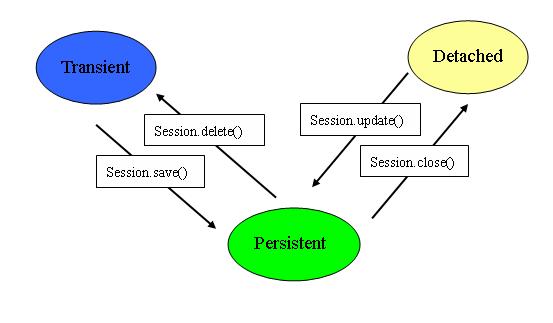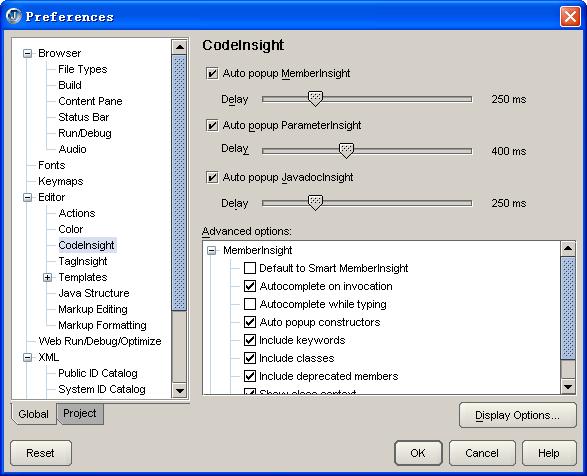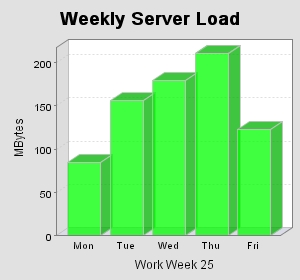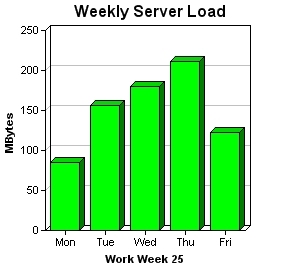
2005年6月9日
最近在弄swing,需要由JComponent生成BufferedImage,在CSDN上发现一个好例子。下面是范例:
 Rectangle rect = comp.getBounds();
Rectangle rect = comp.getBounds();
 BufferedImage bufImage = new BufferedImage(rect.width,
BufferedImage bufImage = new BufferedImage(rect.width,
 rect.height,
rect.height,
 BufferedImage.TYPE_INT_RGB);
BufferedImage.TYPE_INT_RGB);
 Graphics g = bufImage.getGraphics();
Graphics g = bufImage.getGraphics();
 g.translate(-rect.x, -rect.y);
g.translate(-rect.x, -rect.y);
 comp.paint(g);
comp.paint(g);这样,JComponent中的图像就保存到BufferedImage中了。
原文的链接:
http://dev.csdn.net/article/13/13531.shtm
posted @
2006-04-14 23:41 小米 阅读(1409) |
评论 (1) |
编辑 收藏
好久没有写blog了,距离上次写几乎已经是半年前的事情了。

这半年发生了不少事情。首先换了家公司,进了家金融企业,每天要西装革履的,一开始还真是不习惯。

这里开发是用的spring框架,以后要多研究研究spring的东西了。
第二件事就是和恋爱了三年的女友结婚了,从此两人长相厮守,不知道时间久了会不会审美疲劳。呵呵。

第三件事就是在深圳买了自己的小房子,虽然是小小的两房,不过我们已经很知足了。

而且刚好是赶在房价大涨前买的,还算走了点运气。换到现在,都不知道去哪里买好了。
在这里要向一些留言和发邮件给我的网友道歉,前段时间实在是太忙,没有空回复你们的信息和邮件。请原谅!

posted @
2006-03-29 19:43 小米 阅读(825) |
评论 (0) |
编辑 收藏
最近真是多事情忙,而且可能要忙到9月底。好久没有上来更新我的博客了,暂且发发牢骚。

posted @
2005-08-10 17:32 小米 阅读(1290) |
评论 (1) |
编辑 收藏
这一节是非常实用的一节,我在阅读此书的时候,一直在迷惑,究竟应该怎样管理Session呢?因为Session的管理是如此重要,类似于以前写程序对JDBC Connection的管理。看完此节后,终于找到了方法。
在各种Session管理方案中,ThreadLocal模式得到了大量使用。ThreadLocal是Java中一种较为特殊的线程绑定机制。通过ThreadLocal存取的数据,总是与当前线程相关,也就是说,JVM为每个运行的线程,绑定了私有的本定实例存取空间,从而为多线程环境经常出现的并发访问问题提供了一种隔离机制。
下面是Hibernate官方提供的一个ThreadLocal工具:
 import net.sf.hibernate.*;
import net.sf.hibernate.*;
 import net.sf.hibernate.cfg.*;
import net.sf.hibernate.cfg.*;
 import org.apache.log4j.Logger;
import org.apache.log4j.Logger;


 /**//**
/**//**
 * <p>Title: </p>
* <p>Title: </p>
 *
*
 * <p>Description: Session的管理类</p>
* <p>Description: Session的管理类</p>
 *
*
 * <p>Copyright: Copyright (c) 2005</p>
* <p>Copyright: Copyright (c) 2005</p>
 *
*
 * <p>Company: </p>
* <p>Company: </p>
 *
*
 * @author George Hill
* @author George Hill
 * @version 1.0
* @version 1.0
 */
*/


 public class HibernateUtil
public class HibernateUtil  {
{

 private static final Logger log = Logger.getLogger(HibernateUtil.class);
private static final Logger log = Logger.getLogger(HibernateUtil.class);

 private static final SessionFactory sessionFactory;
private static final SessionFactory sessionFactory;


 /**//**
/**//**
 * 初始化Hibernate配置
* 初始化Hibernate配置
 */
*/

 static
static  {
{

 try
try  {
{
 // Create the SessionFactory
// Create the SessionFactory
 sessionFactory = new Configuration().configure().buildSessionFactory();
sessionFactory = new Configuration().configure().buildSessionFactory();

 } catch (Throwable ex)
} catch (Throwable ex)  {
{
 log.error("Initial SessionFactory creation failed.", ex);
log.error("Initial SessionFactory creation failed.", ex);
 throw new ExceptionInInitializerError(ex);
throw new ExceptionInInitializerError(ex);
 }
}
 }
}

 public static final ThreadLocal session = new ThreadLocal();
public static final ThreadLocal session = new ThreadLocal();


 /**//**
/**//**
 * 根据当前线程获取相应的Session
* 根据当前线程获取相应的Session
 * @return Session
* @return Session
 * @throws HibernateException
* @throws HibernateException
 */
*/

 public static Session currentSession() throws HibernateException
public static Session currentSession() throws HibernateException  {
{
 Session s = (Session) session.get();
Session s = (Session) session.get();
 // Open a new Session, if this Thread has none yet
// Open a new Session, if this Thread has none yet

 if (s == null)
if (s == null)  {
{
 s = sessionFactory.openSession();
s = sessionFactory.openSession();
 session.set(s);
session.set(s);
 }
}
 return s;
return s;
 }
}


 /**//**
/**//**
 * 返回Session给相应的线程
* 返回Session给相应的线程
 * @throws HibernateException
* @throws HibernateException
 */
*/

 public static void closeSession() throws HibernateException
public static void closeSession() throws HibernateException  {
{
 Session s = (Session) session.get();
Session s = (Session) session.get();
 session.set(null);
session.set(null);
 if (s != null)
if (s != null)
 s.close();
s.close();
 }
}

 }
}

针对WEB程序,还可以利用Servlet2.3的Filter机制,轻松实现线程生命周期内的Session管理。下面是一个通过Filter进行Session管理的典型案例:

 public class PersistenceFilter implements Filter
public class PersistenceFilter implements Filter  {
{
 protected static ThreadLocal hibernateHolder = new ThreadLocal();
protected static ThreadLocal hibernateHolder = new ThreadLocal();


 public void doFilter(ServletRequest request, ServletResponse response, FilterChain chain) throws IOException, ServletException
public void doFilter(ServletRequest request, ServletResponse response, FilterChain chain) throws IOException, ServletException  {
{
 hibernateHolder.set(getSession());
hibernateHolder.set(getSession());

 try
try  {
{



 chain.doFilter(request, response);
chain.doFilter(request, response);




 } finally
} finally  {
{
 Session session = (Session) hibernateHolder.get();
Session session = (Session) hibernateHolder.get();

 if (session != null)
if (session != null)  {
{
 hibernateHolder.set(null);
hibernateHolder.set(null);

 try
try  {
{
 session.close();
session.close();

 } catch (HibernateException ex)
} catch (HibernateException ex)  {
{
 throw new ServletException(ex);
throw new ServletException(ex);
 }
}
 }
}
 }
}
 }
}



 }
}
posted @
2005-07-29 19:43 小米 阅读(3967) |
评论 (1) |
编辑 收藏
数据分页显示,是很多B/S系统会遇到的问题。现在大多数主流数据库都提供了数据部分读取机制,而对于某些没有提供相应机制的数据而言,Hibernate也通过其它途径实现了分页,如通过Scrollable ResultSet,如果JDBC不支持Scrollable ResultSet,Hibernate也会自动通过ResultSet的next方法进行记录定位。Hibernate的Criteria、Query等接口提供了一致的方法设定分页范围。下面是书中的例子:
 Criteria criteria = session.createCriteria(TUser.class);
Criteria criteria = session.createCriteria(TUser.class);
 Criteria.add(Expression.eq("age", "20"));
Criteria.add(Expression.eq("age", "20"));
 //从检索结果中获取第100条记录开始的20条记录
//从检索结果中获取第100条记录开始的20条记录
 criteria.setFirstResult(100);
criteria.setFirstResult(100);
 criteria.setFetchSize(20);
criteria.setFetchSize(20); 不过,我在测试的时候总是不能够正常工作,把setFetchSize方法换成setMaxResults方法才行。换成最新的mysql-connector-java-3.1.10-bin-g.jar驱动也是一样。
posted @
2005-07-26 18:12 小米 阅读(5584) |
评论 (4) |
编辑 收藏 Hibernate通过Lifecycle、Validatable接口制定了实体对象CRUD过程中的回调方式。
Lifecycle接口中的onSave、onUpdate、onDelete方法,如果返回true则意味着需要中止执行相应的操作过程。如果代码运行期间抛出了CallbackException,对应的操作也会被中止。注意,不要试图在这些方法中调用Session进行持久化操作,这些方法中Session无法正常使用。
Validatable.validate方法将在实体被持久化之前得到调用以对数据进行验证。此方法在实体对象的生命周期内可能被数次调用,因此,此方法仅用于数据本身的逻辑校验,而不要试图在此实现业务逻辑的验证。
Hibernate还引入了Interceptor,为持久化事件的捕获和处理提供了一个非侵略性的实现。Interceptor接口定义了Hibernate中的通用拦截机制。Session创建时即可指定加载相应的Interceptor,之后,此Session的持久化操作动作都将首先经由此拦截器捕获处理。简单的加载范例如下:
 SessionFactory factory = config.buildSessionFactory();
SessionFactory factory = config.buildSessionFactory();
 Interceptor it = new MyInterceptor();
Interceptor it = new MyInterceptor();
 session = sessionFactory.openSession(it);
session = sessionFactory.openSession(it); 需要注意的是,与Lifecycle相同,Interceptor的方法中不可通过Session实例进行持久化操作。
posted @
2005-07-21 18:35 小米 阅读(3398) |
评论 (1) |
编辑 收藏
有兴趣的可以去参加看看,网址:
http://www.javachina.cn/Index.jsp
posted @
2005-07-20 14:55 小米 阅读(1047) |
评论 (2) |
编辑 收藏 最近真是忙,事情都挤到一块去了。 终于有时间又看了几页书。
终于有时间又看了几页书。
言归正传,Hibernate中的Collection类型分为有序集和无序集两类。这里所谓的有序和无序,是针对Hibernate数据持久过程中,是否保持数据集合中的记录排列顺序加以区分的。无序集有Set,Bag,Map几种,有序集有List一种。有序集的数据在持久化过程中,会将集合中元素排列的先后顺序同时固化到数据库中,读取时也会返回一个具备同样排列顺序的数据集合。
Hibernate中的Collection类型是用的自己的实现,所以在程序中,不能够把接口强制转化成相应的JDK Collection的实现。
结果集的排序有两种方式:
1. Sort
Collection中的数据排序。
2. order-by
对数据库执行Select SQL时,由order by子句实现的数据排序方式。
需要注意的是,order-by特性在实现中借助了JDK 1.4中的新增集合类LinkedHashSet以及LinkedHashMap。因此,order-by特性只支持在1.4版本以上的JDK中运行。
posted @
2005-07-20 10:56 小米 阅读(3972) |
评论 (0) |
编辑 收藏
Session.get/load的区别:
1.如果未能发现符合条件的记录,get方法返回null,而load方法会抛出一个ObejctNotFoundException。
2.Load方法可返回实体的代理类类型,而get方法永远直接返回实体类。
3.Load方法可以充分利用内部缓存和二级缓存中现有数据,而get方法则仅仅在内部缓存中进行数据查找,如没有发现对应数据,将越过二级缓存,直接调用SQL完成数据读取。
Session.find/iterate的区别:
find方法将执行Select SQL从数据库中获得所有符合条件的记录并构造相应的实体对象,实体对象构建完毕之后,就将其纳入缓存。它对缓存只写不读,因此无法利用缓存。
iterate方法首先执行一条Select SQL以获得所有符合查询条件的数据id,随即,iterate方法首先在本地缓存中根据id查找对应的实体对象是否存在,如果缓存中已经存在对应的数据,则直接以此数据对象作为查询结果,如果没有找到,再执行相应的Select语句获得对应的库表记录(iterate方法如果执行了数据库读取操作并构建了完整的数据对象,也会将其查询结果纳入缓存)。
Query Cache产生作用的情况:
1.完全相同的Select SQL重复执行。
2.在两次查询之间,此Select SQL对应的库表没有发生过改变。
Session.save方法的执行步骤:
1.在Session内部缓存中寻找待保存对象。内部缓存命中,则认为此数据已经保存(执行过insert操作),实体对象已经处于Persistent状态,直接返回。
2.如果实体类实现了lifecycle接口,则调用待保存对象的onSave方法。
3.如果实体类实现了validatable接口,则调用其validate()方法。
4.调用对应拦截器的Interceptor.onSave方法(如果有的话)。
5.构造Insert SQL,并加以执行。
6.记录插入成功,user.id属性被设定为insert操作返回的新记录id值。
7.将user对象放入内部缓存。
8.最后,如果存在级联关系,对级联关系进行递归处理。
Session.update方法的执行步骤:
1.根据待更新实体对象的Key,在当前session的内部缓存中进行查找,如果发现,则认为当前实体对象已经处于Persistent状态,返回。
2.初始化实体对象的状态信息(作为之后脏数据检查的依据),并将其纳入内部缓存。注意这里Session.update方法本身并没有发送Update SQL完成数据更新操作,Update SQL将在之后的Session.flush方法中执行(Transaction.commit在真正提交数据库事务之前会调用Session.flush)。
Session.saveOrUpdate方法的执行步骤:
1.首先在Session内部缓存中进行查找,如果发现则直接返回。
2.执行实体类对应的Interceptor.isUnsaved方法(如果有的话),判断对象是否为未保存状态。
3.根据unsaved-value判断对象是否处于未保存状态。
4.如果对象未保存(Transient状态),则调用save方法保存对象。
5.如果对象为已保存(Detached状态),调用update方法将对象与Session重新关联。
posted @
2005-07-12 18:49 小米 阅读(4937) |
评论 (5) |
编辑 收藏
事务的4个基本特性(ACID):
1. Atomic(原子性):事务中包含的操作被看作一个逻辑单元,这个逻辑单元中的操作要么全部成功,要么全部失败。
2. Consistency(一致性):只有合法的数据可以被写入数据库,否则事务应该将其回滚到最初状态。
3. Isolation(隔离性):事务允许多个用户对同一个数据的并发访问,而不破坏数据的正确性和完整性。同时,并行事务的修改必须与其他并行事务的修改相互独立。
4. Durability(持久性):事务结束后,事务处理的结果必须能够得到固化。
数据库操作过程中可能出现的3种不确定情况:
1. 脏读取(Dirty Reads):一个事务读取了另一个并行事务未提交的数据。
2. 不可重复读取(Non-repeatable Reads):一个事务再次读取之前的数据时,得到的数据不一致,被另一个已提交的事务修改。
3. 虚读(Phantom Reads):一个事务重新执行一个查询,返回的记录中包含了因为其他最近提交的事务而产生的新记录。
标准SQL规范中,为了避免上面3种情况的出现,定义了4个事务隔离等级:
1. Read Uncommitted:最低等级的事务隔离,仅仅保证了读取过程中不会读取到非法数据。上诉3种不确定情况均有可能发生。
2. Read Committed:大多数主流数据库的默认事务等级,保证了一个事务不会读到另一个并行事务已修改但未提交的数据,避免了“脏读取”。该级别适用于大多数系统。
3. Repeatable Read:保证了一个事务不会修改已经由另一个事务读取但未提交(回滚)的数据。避免了“脏读取”和“不可重复读取”的情况,但是带来了更多的性能损失。
4. Serializable:最高等级的事务隔离,上面3种不确定情况都将被规避。这个级别将模拟事务的串行执行。
Hibernate将事务管理委托给底层的JDBC或者JTA,默认是基于JDBC Transaction的。
Hibernate支持“悲观锁(Pessimistic Locking)”和“乐观锁(Optimistic Locking)”。
悲观锁对数据被外界修改持保守态度,因此,在整个数据处理过程中,将数据处于锁定状态。悲观锁的实现,往往依靠数据库提供的锁机制。Hibernate通过使用数据库的for update子句实现了悲观锁机制。Hibernate的加锁模式有:
1. LockMode.NONE:无锁机制
2. LockMode.WRITE:Hibernate在Insert和Update记录的时候会自动获取
3. LockMode.READ:Hibernate在读取记录的时候会自动获取
4. LockMode.UPGRADE:利用数据库的for update子句加锁
5. LockMode.UPGRADE_NOWAIT:Oracle的特定实现,利用Oracle的for update nowait子句实现加锁
乐观锁大多是基于数据版本(Version)记录机制实现。Hibernate在其数据访问引擎中内置了乐观锁实现,可以通过class描述符的optimistic-lock属性结合version描述符指定。optimistic-lock属性有如下可选取值:
1. none:无乐观锁
2. version:通过版本机制实现乐观锁
3. dirty:通过检查发生变动过的属性实现乐观锁
4. all:通过检查所有属性实现乐观锁
posted @
2005-07-08 16:19 小米 阅读(4881) |
评论 (4) |
编辑 收藏 现在搜狐新闻上报道已经有700多人伤亡,这是自从911事件以后最大的一次恐怖袭击了。现在这个世界,是越来越不太平了,贫富差距的加大使得恐怖活动有生存的土壤。
不知道世界的经济会不会随着这次恐怖袭击而开始走向萧条。现在的地球越来越像一个村,发生在任何一个角落的事情,都有可能会影响到每一个人。
posted @
2005-07-08 10:50 小米 阅读(681) |
评论 (0) |
编辑 收藏
昨晚偶然看见国际台播放星战的作者乔治卢卡斯荣获AFI终身成就奖的颁奖典礼,耐心的看完了整个颁奖典礼。乔治在发表致词的时候,说自己很高兴能够从事自己喜欢的电影工作,如果不拍摄电影,都不知道自己还能够做什么。拍电影已经成了乔治生命的一部分。
看到荧屏上全世界的老人,中年人,年轻人,孩子说着:“Thank you! George.”可以看到乔治的眼睛朦胧。我心中真是感慨,每个人都有自己的梦想,能够从事自己喜欢的事情,确实是很开心的一件事。而自己所做的工作,能够给自己带来快乐,能够给人们带来快乐,这样的工作才值得用一生的时间去从事。
每一个登山者都有着自己心目中最想登上的山顶,能够登上这个山顶,前面付出的艰辛都是值得的。人生不也如此么?找到自己喜欢从事的事情,用自己毕生的精力去做这件事。
posted @
2005-07-07 12:00 小米 阅读(684) |
评论 (0) |
编辑 收藏
| 献出一份爱心 共同援助重病程序员王俊 |
| (2005.06.27) 来自:BJUG |
|
|
|
posted @
2005-07-04 18:48 小米 阅读(1756) |
评论 (22) |
编辑 收藏
摘要: 要将BufferedImage实例保存为BMP文件,就需要知道BMP文件的格式,可以参考我转载的文章:《BMP文件格式》。 下面是我的将BufferedImage实例保存为24位色BMP文件的实现。 ...
阅读全文
posted @
2005-07-04 17:33 小米 阅读(3468) |
评论 (6) |
编辑 收藏
在公元2005年6月27日,我做出了一个重大的决定,买房!花了自己至今为止都没有见过的那么多的钱买了一个小小的2房2厅,

从此变成了“负翁”。
不过,从此以后再也不用去租房,再也不用帮别人供房,再也不用一年搬一次家。深圳租房实在太贵,莲花北的一个小小的二房都要1800,有点装修就叫豪华装修,就是一个空荡荡的房子也开口要1500,太夸张了。住农民房又极度不安全,不想拿自己的生命开玩笑。
从此就变成月供一族了,

,不过,有了压力才有动力。为了自己的将来,自己的理想,努力奋斗!
9月26日是入伙的日子,好期待那天的到来啊。

posted @
2005-06-29 09:47 小米 阅读(952) |
评论 (9) |
编辑 收藏
一般而言,ORM的数据缓存应包含如下几个层次:
1. 事务级缓存(Transcation Layer Cache)
2. 应用级/进程级缓存(Application/Process Layer Cache)
3. 分布式缓存(Cluster Layer Cache)
Hibernate数据缓存(Cache)分为两个层次,以Hibernate语义加以区分,可分为:
1. 内部缓存(Session Level,也称为一级缓存)
2. 二级缓存(SessionFactory Level,也称为二级缓存)
Hibernate中,缓存将在以下情况中发挥作用:
1. 通过id[主键]加载数据时
2. 延迟加载
内部缓存正常情况下由Hibernate自动维护,如果需要手动干预,可以通过以下方法完成:
1. Session.evict
将某个特定对象从内部缓存清除。
2. Session.clear
清空内部缓存。
在Hibernate中,二级缓存涵盖了应用级缓存和分布式缓存领域。如果数据满足以下条件,则可将其纳入缓存管理。
1. 数据不会被第三方应用修改;
2. 数据大小(Data Size)在可接收的范围之内;
3. 数据更新频率较低;
4. 同一数据可能会被系统频繁引用;
5. 非关键数据(关键数据,如金融帐户数据)。
Hibernate本身并未提供二级缓存的产品化实现,而是为众多的第三方缓存组件提供了接入接口,较常用的第三方组件有:
1. JCS
2. EHCache
3. OSCache
4. JBossCache
5. SwarmCache
Hibernate中启用二级缓存,需要在hibernate.cfg.xml配置hibernate.cache.provider_class参数,之后,需要在映射文件中指定各个映射实体(以及collection)的缓存同步策略。Hibernate提供了一下4种内置的缓存同步策略:
1. read-only
只读。对于不会发生改变的数据,可使用只读型缓存。
2. nonstrict-read-write
如果程序对并发访问下的数据同步要求不是非常严格,且数据更新操作频率较低,可以采用本选项,获得较好的性能。
3. read-write
严格可读写缓存。基于时间戳判定机制,实现了“read committed”事务隔离等级。可用于对数据同步要求严格的情况,但不支持分布式缓存。这也是实际应用中使用最多的同步策略。
4. transactional
事务型缓存,必须运行在JTA事务环境中。
posted @
2005-06-22 18:15 小米 阅读(6155) |
评论 (5) |
编辑 收藏 在Java语言中,对象之间的比较可以通过引用比较(==)和内容比较(equals)两种方式进行,而在Hibernate的实体对象的比较是通过主键值来比较,如果要实现自己的识别逻辑,则需要重写equals方法和hashCode方法。
检查数据对象改变检查的一般策略有下面两种:
1. 数据对象监控
数据对象监控的实现方式,通过拦截器对数据对象的设值方法进行拦截。一旦数据对象的设置方法被调用,则将其标志为“待更新”状态,之后在数据库操作时将其更新到对应的库表。
2. 数据版本对比
在持久层框架中维持数据对象的最近读取版本,当数据提交时将提交数据与此版本进行比对,如果发生变化则将其同步到数据库对应的库表。
Hibernate采取的是第二种检查策略。它采用一个内部数据结构"EntityEntry"保存对应实体类的状态信息。
对于级联对象的更新,Hibernate将根据unsaved-value进行判定。首先Hibernate会取出目标对象的id。之后,将此值与unsaved-value进行比对,如果相等,则认为目标对象尚未保存,否则,认为对象已经保存,无需再进行保存操作。
posted @
2005-06-22 16:32 小米 阅读(5179) |
评论 (4) |
编辑 收藏
最近正在研读《深入浅出Hibernate》一书,前面写的随笔有些也是读该书的笔记,只是未做归类,从这篇开始,我将把相关的内容都整理成一个系列的读书笔记。
今天这篇是有关实体对象的生命周期。我刚开始接触Hibernate的时候,只是简单的把它当做一个API工具,直到后来看到有关VO和PO的内容时,才意识到Hibernate不仅仅是一个O/R Mapping的API工具,它还是一个容器。它可以帮你管理实体对象的生命周期。
实体对象的生命周期有三种状态:
1.Transient(自由状态)
此时的实体对象和数据库中的记录无关联,只是一个普通的JavaBean。
2.Persistent(持久状态)
此时的实体对象和数据库中的记录有关联,其变更将由Hibernate固化到数据库中。该实体对象处于由Hibernate框架所管理的状态。
3.Detached(游离状态)
处于Persistent状态的对象,其对应的Session实例关闭之后,那么,此对象就处于"Detached"状态。Detached状态和Transient状态的区别在于Detached状态的对象可以再次与某个Session实例相关联而成为Persistent对象。
从实体对象是否被纳入Hibernate实体管理容器的角度,Transient和Detached状态的实体对象可以统称为VO(Value Object),而被管理的实体对象称为PO(Persistent Object)。两者的区别:
1.VO是相对独立的实体对象,处于非管理状态。
2.PO是Hibernate纳入其实体管理容器(Entity Map)的对象,它代表了与数据库中某条记录对应的Hibernate实体,PO的变化在事务提交时将反映到实际数据库中。
3.如果一个PO与其对应的Session实例分离,那么此时,它又会变成一个VO。
下图是我画的实体对象生命周期的状态转换图:

posted @
2005-06-16 18:31 小米 阅读(3119) |
评论 (9) |
编辑 收藏
在使用HQL查询中,有时并不需要获取完整的一个实体对象,例如一个实体对象User有三个属性:account, password和email,如果我们只需要获取account和email属性,那么有两种方法可以选择。
1. 用普通的"select user.account, user.email from User as user",程序片断如下:
 List list = session.createQuery("select user.account, user.email from User as user").list();
List list = session.createQuery("select user.account, user.email from User as user").list();
 Iterator it = list.iterator();
Iterator it = list.iterator();

 while (it.hasNext())
while (it.hasNext())  {
{
 Object[] values = (Object[]) it.next();
Object[] values = (Object[]) it.next();
 System.out.println(values[0] + " " + values[1]);
System.out.println(values[0] + " " + values[1]);
 }
} 这时调用Query类的list方法返回的将是一个每个元素都是一个Object数组的List。如果只获取一个属性,那么返回的List中的每个元素都是String实例。
2.在HQL中用new操作符生成实体对象,例如:"select new User(user.account, user.email) from User as user",程序片断如下:
 List list = session.createQuery("select new User(user.account, user.email) from User as user").list();
List list = session.createQuery("select new User(user.account, user.email) from User as user").list();
 Iterator it = list.iterator();
Iterator it = list.iterator();

 while (it.hasNext())
while (it.hasNext())  {
{
 User user = (User) it.next();
User user = (User) it.next();
 System.out.println(user.getAccount() + " " + user.getEmail());
System.out.println(user.getAccount() + " " + user.getEmail());
 }
} 这时list方法返回的List中的每一个元素都是User实体对象。这里有三点需要注意的:
a.在HQL语句中需要使用as操作符指定User的别名,并且需要在构造函数的属性前面加上别名;
b.HQL语句中的构造函数在User类中必须要有相应的构造函数;
c.生成的实体对象是VO对象,如果对这些对象调用Session的saveOrUpdate方法将导致插入新的记录,而不是更新记录。
posted @
2005-06-15 16:33 小米 阅读(3028) |
评论 (0) |
编辑 收藏
JBuilder 2005中多了一个Smart MemberInsight功能,这个功能会智能的匹配需要调用的方法或者获取的属性。例如有一个赋值操作,左边是一个List,右边是用一个方法获取值,那么当输入"."时,JBuilder 2005会自动的找到所有返回的值为List的方法。
不过,这实在是一个不怎么讨好的方法。因为很多时候并不是只有一层方法调用的,例如,当需要用一个方法获取一个实例,然后再用这个实例的方法获取需要的值时,这个功能就显得很碍手了。
终于,我还是决定关闭这个“智能”的功能。打开"Tools"——>"Preferences",在"Editor"的子项"CodeInsight"里,展开"MemberInsight",把"Default to Smart MemberInsight"这一项去掉。如下图所示:

posted @
2005-06-15 16:02 小米 阅读(541) |
评论 (0) |
编辑 收藏
这个范例说明如何用JFreeChart画简单的柱状图,下面是一个JSP的简单范例:
 <%@ page contentType="text/html; charset=GB2312" %>
<%@ page contentType="text/html; charset=GB2312" %>
 <%@ page import="java.awt.*, java.text.*, java.util.*" %>
<%@ page import="java.awt.*, java.text.*, java.util.*" %>
 <%@ page import="org.jfree.chart.*" %>
<%@ page import="org.jfree.chart.*" %>
 <%@ page import="org.jfree.chart.axis.*" %>
<%@ page import="org.jfree.chart.axis.*" %>
 <%@ page import="org.jfree.chart.labels.StandardCategoryItemLabelGenerator" %>
<%@ page import="org.jfree.chart.labels.StandardCategoryItemLabelGenerator" %>
 <%@ page import="org.jfree.chart.plot.*" %>
<%@ page import="org.jfree.chart.plot.*" %>
 <%@ page import="org.jfree.chart.renderer.*" %>
<%@ page import="org.jfree.chart.renderer.*" %>
 <%@ page import="org.jfree.chart.servlet.ServletUtilities" %>
<%@ page import="org.jfree.chart.servlet.ServletUtilities" %>
 <%@ page import="org.jfree.data.DefaultCategoryDataset" %>
<%@ page import="org.jfree.data.DefaultCategoryDataset" %>
 <%@ page import="org.jfree.ui.TextAnchor" %>
<%@ page import="org.jfree.ui.TextAnchor" %>

 <%
<%
 //The data for the bar chart
//The data for the bar chart

 double[] data =
double[] data =  {85, 156, 179.5, 211, 123};
{85, 156, 179.5, 211, 123};
 //The labels for the bar chart
//The labels for the bar chart

 String[] labels =
String[] labels =  {"Mon", "Tue", "Wed", "Thu", "Fri"};
{"Mon", "Tue", "Wed", "Thu", "Fri"};

 DefaultCategoryDataset dataset = new DefaultCategoryDataset();
DefaultCategoryDataset dataset = new DefaultCategoryDataset();

 for (int i = 0; i < data.length; i++)
for (int i = 0; i < data.length; i++)  {
{
 dataset.addValue(data[i], null, labels[i]);
dataset.addValue(data[i], null, labels[i]);
 }
}

 JFreeChart chart = ChartFactory.createBarChart3D("Weekly Server Load", "Work Week 25", "MBytes", dataset, PlotOrientation.VERTICAL, false, false, false);
JFreeChart chart = ChartFactory.createBarChart3D("Weekly Server Load", "Work Week 25", "MBytes", dataset, PlotOrientation.VERTICAL, false, false, false);
 chart.setBackgroundPaint(new Color(0xE1E1E1));
chart.setBackgroundPaint(new Color(0xE1E1E1));

 CategoryPlot plot = chart.getCategoryPlot();
CategoryPlot plot = chart.getCategoryPlot();

 // 设置Y轴显示整数
// 设置Y轴显示整数
 NumberAxis rangeAxis = (NumberAxis) plot.getRangeAxis();
NumberAxis rangeAxis = (NumberAxis) plot.getRangeAxis();
 rangeAxis.setStandardTickUnits(NumberAxis.createIntegerTickUnits());
rangeAxis.setStandardTickUnits(NumberAxis.createIntegerTickUnits());

 CategoryAxis domainAxis = plot.getDomainAxis();
CategoryAxis domainAxis = plot.getDomainAxis();
 //设置距离图片左端距离
//设置距离图片左端距离
 domainAxis.setLowerMargin(0.05);
domainAxis.setLowerMargin(0.05);

 BarRenderer3D renderer = new BarRenderer3D();
BarRenderer3D renderer = new BarRenderer3D();
 //设置柱的颜色
//设置柱的颜色
 renderer.setSeriesPaint(0, new Color(0xff00));
renderer.setSeriesPaint(0, new Color(0xff00));
 plot.setRenderer(renderer);
plot.setRenderer(renderer);

 String filename = ServletUtilities.saveChartAsPNG(chart, 300, 280, null, session);
String filename = ServletUtilities.saveChartAsPNG(chart, 300, 280, null, session);
 String graphURL = request.getContextPath() + "/displayChart?filename=" + filename;
String graphURL = request.getContextPath() + "/displayChart?filename=" + filename;
 %>
%>
 <html>
<html>
 <body topmargin="5" leftmargin="5" rightmargin="0">
<body topmargin="5" leftmargin="5" rightmargin="0">
 <div style="font-size:18pt; font-family:verdana; font-weight:bold">
<div style="font-size:18pt; font-family:verdana; font-weight:bold">
 3D Bar Chart
3D Bar Chart
 </div>
</div>
 <br>
<br>
 <img src="<%= graphURL %>" border=0>
<img src="<%= graphURL %>" border=0>
 </body>
</body>
 </html>
</html>

画出来的图:

和ChartDirector画出来的图做一个比较:

posted @
2005-06-14 18:40 小米 阅读(10721) |
评论 (7) |
编辑 收藏
以前一直是用JFreeChart画统计图的,不过JFreeChart画出来的图形不够精细,看起来有些模糊,今天在网上看到另外一个工具ChartDirector,这是一个商业版本的工具,不过也可以免费使用,只是在画出来的图形下面都有一条它的广告条。
下面是它的一个柱状图的例子:

范例程序:
 <%@page import="ChartDirector.*" %>
<%@page import="ChartDirector.*" %>
 <%
<%
 //The data for the bar chart
//The data for the bar chart

 double[] data =
double[] data =  {85, 156, 179.5, 211, 123};
{85, 156, 179.5, 211, 123};

 //The labels for the bar chart
//The labels for the bar chart

 String[] labels =
String[] labels =  {"Mon", "Tue", "Wed", "Thu", "Fri"};
{"Mon", "Tue", "Wed", "Thu", "Fri"};

 //Create a XYChart object of size 300 x 280 pixels
//Create a XYChart object of size 300 x 280 pixels
 XYChart c = new XYChart(300, 280);
XYChart c = new XYChart(300, 280);

 //Set the plotarea at (45, 30) and of size 200 x 200 pixels
//Set the plotarea at (45, 30) and of size 200 x 200 pixels
 c.setPlotArea(45, 30, 200, 200);
c.setPlotArea(45, 30, 200, 200);

 //Add a title to the chart
//Add a title to the chart
 c.addTitle("Weekly Server Load");
c.addTitle("Weekly Server Load");

 //Add a title to the y axis
//Add a title to the y axis
 c.yAxis().setTitle("MBytes");
c.yAxis().setTitle("MBytes");

 //Add a title to the x axis
//Add a title to the x axis
 c.xAxis().setTitle("Work Week 25");
c.xAxis().setTitle("Work Week 25");

 //Add a bar chart layer with green (0x00ff00) bars using the given data
//Add a bar chart layer with green (0x00ff00) bars using the given data
 c.addBarLayer(data, 0xff00).set3D();
c.addBarLayer(data, 0xff00).set3D();

 //Set the labels on the x axis.
//Set the labels on the x axis.
 c.xAxis().setLabels(labels);
c.xAxis().setLabels(labels);

 //output the chart
//output the chart
 String chart1URL = c.makeSession(request, "chart1");
String chart1URL = c.makeSession(request, "chart1");

 //include tool tip for the chart
//include tool tip for the chart
 String imageMap1 = c.getHTMLImageMap("", "", "title='{xLabel}: {value} MBytes'")
String imageMap1 = c.getHTMLImageMap("", "", "title='{xLabel}: {value} MBytes'")
 ;
;
 %>
%>
 <html>
<html>
 <body topmargin="5" leftmargin="5" rightmargin="0">
<body topmargin="5" leftmargin="5" rightmargin="0">
 <div style="font-size:18pt; font-family:verdana; font-weight:bold">
<div style="font-size:18pt; font-family:verdana; font-weight:bold">
 3D Bar Chart
3D Bar Chart
 </div>
</div>
 <hr color="#000080">
<hr color="#000080">
 <a href="viewsource.jsp?file=<%=request.getServletPath()%>">
<a href="viewsource.jsp?file=<%=request.getServletPath()%>">
 <font size="2" face="Verdana">View Chart Source Code</font>
<font size="2" face="Verdana">View Chart Source Code</font>
 </a>
</a>
 </div>
</div>
 <br>
<br>
 <img src='<%=response.encodeURL("getchart.jsp?"+chart1URL)%>'
<img src='<%=response.encodeURL("getchart.jsp?"+chart1URL)%>'
 usemap="#map1" border="0">
usemap="#map1" border="0">
 <map name="map1"><%=imageMap1%></map>
<map name="map1"><%=imageMap1%></map>
 </body>
</body>
 </html>
</html>

如果要在柱的顶部显示数值,可以调用Layer的setDataLabelFormat方法设置,范例:layer.setDataLabelFormat("{value}");
其它的例子可以参考它的文档的说明。ChartDirector的网址:http://www.advsofteng.com
posted @
2005-06-14 17:46 小米 阅读(5271) |
评论 (5) |
编辑 收藏
如果要在程序中定时执行任务,可以使用java.util.Timer这个类实现。使用Timer类需要一个继承了java.util.TimerTask的类。TimerTask是一个虚类,需要实现它的run方法,实际上是他implements了Runnable接口,而把run方法留给子类实现。
下面是我的一个例子:

 class Worker extends TimerTask
class Worker extends TimerTask  {
{

 public void run()
public void run()  {
{
 System.out.println("我在工作啦!");
System.out.println("我在工作啦!");
 }
}
 }
} Timer类用schedule方法或者scheduleAtFixedRate方法启动定时执行,schedule重载了四个版本,scheduleAtFixedRate重载了两个。每个方法的实现都不同,下面是每个方法的说明:
schedule
public void schedule(TimerTask task,
long delay)
- Schedules the specified task for execution after the specified delay.
-
- Parameters:
task - task to be scheduled.
delay - delay in milliseconds before task is to be executed.
- Throws:
IllegalArgumentException - if delay is negative, or delay + System.currentTimeMillis() is negative.
IllegalStateException - if task was already scheduled or cancelled, or timer was cancelled.
说明:该方法会在设定的延时后执行一次任务。
schedule
public void schedule(TimerTask task,
Date time)
- Schedules the specified task for execution at the specified time. If the time is in the past, the task is scheduled for immediate execution.
-
- Parameters:
task - task to be scheduled.
time - time at which task is to be executed.
- Throws:
IllegalArgumentException - if time.getTime() is negative.
IllegalStateException - if task was already scheduled or cancelled, timer was cancelled, or timer thread terminated.
说明:该方法会在指定的时间点执行一次任务。
schedule
public void schedule(TimerTask task,
long delay,
long period)
- Schedules the specified task for repeated fixed-delay execution, beginning after the specified delay. Subsequent executions take place at approximately regular intervals separated by the specified period.
In fixed-delay execution, each execution is scheduled relative to the actual execution time of the previous execution. If an execution is delayed for any reason (such as garbage collection or other background activity), subsequent executions will be delayed as well. In the long run, the frequency of execution will generally be slightly lower than the reciprocal of the specified period (assuming the system clock underlying Object.wait(long) is accurate).
Fixed-delay execution is appropriate for recurring activities that require "smoothness." In other words, it is appropriate for activities where it is more important to keep the frequency accurate in the short run than in the long run. This includes most animation tasks, such as blinking a cursor at regular intervals. It also includes tasks wherein regular activity is performed in response to human input, such as automatically repeating a character as long as a key is held down.
-
- Parameters:
task - task to be scheduled.
delay - delay in milliseconds before task is to be executed.
period - time in milliseconds between successive task executions.
- Throws:
IllegalArgumentException - if delay is negative, or delay + System.currentTimeMillis() is negative.
IllegalStateException - if task was already scheduled or cancelled, timer was cancelled, or timer thread terminated.
说明:该方法会在指定的延时后执行任务,并且在设定的周期定时执行任务。
schedule
public void schedule(TimerTask task,
Date firstTime,
long period)
- Schedules the specified task for repeated fixed-delay execution, beginning at the specified time. Subsequent executions take place at approximately regular intervals, separated by the specified period.
In fixed-delay execution, each execution is scheduled relative to the actual execution time of the previous execution. If an execution is delayed for any reason (such as garbage collection or other background activity), subsequent executions will be delayed as well. In the long run, the frequency of execution will generally be slightly lower than the reciprocal of the specified period (assuming the system clock underlying Object.wait(long) is accurate).
Fixed-delay execution is appropriate for recurring activities that require "smoothness." In other words, it is appropriate for activities where it is more important to keep the frequency accurate in the short run than in the long run. This includes most animation tasks, such as blinking a cursor at regular intervals. It also includes tasks wherein regular activity is performed in response to human input, such as automatically repeating a character as long as a key is held down.
-
- Parameters:
task - task to be scheduled.
firstTime - First time at which task is to be executed.
period - time in milliseconds between successive task executions.
- Throws:
IllegalArgumentException - if time.getTime() is negative.
IllegalStateException - if task was already scheduled or cancelled, timer was cancelled, or timer thread terminated.
说明:该方法会在指定的时间点执行任务,然后从该时间点开始,在设定的周期定时执行任务。特别的,如果设定的时间点在当前时间之前,任务会被马上执行,然后开始按照设定的周期定时执行任务。
scheduleAtFixedRate
public void scheduleAtFixedRate(TimerTask task,
long delay,
long period)
- Schedules the specified task for repeated fixed-rate execution, beginning after the specified delay. Subsequent executions take place at approximately regular intervals, separated by the specified period.
In fixed-rate execution, each execution is scheduled relative to the scheduled execution time of the initial execution. If an execution is delayed for any reason (such as garbage collection or other background activity), two or more executions will occur in rapid succession to "catch up." In the long run, the frequency of execution will be exactly the reciprocal of the specified period (assuming the system clock underlying Object.wait(long) is accurate).
Fixed-rate execution is appropriate for recurring activities that are sensitive to absolute time, such as ringing a chime every hour on the hour, or running scheduled maintenance every day at a particular time. It is also appropriate for recurring activities where the total time to perform a fixed number of executions is important, such as a countdown timer that ticks once every second for ten seconds. Finally, fixed-rate execution is appropriate for scheduling multiple repeating timer tasks that must remain synchronized with respect to one another.
-
- Parameters:
task - task to be scheduled.
delay - delay in milliseconds before task is to be executed.
period - time in milliseconds between successive task executions.
- Throws:
IllegalArgumentException - if delay is negative, or delay + System.currentTimeMillis() is negative.
IllegalStateException - if task was already scheduled or cancelled, timer was cancelled, or timer thread terminated.
说明:该方法和schedule的相同参数的版本类似,不同的是,如果该任务因为某些原因(例如垃圾收集)而延迟执行,那么接下来的任务会尽可能的快速执行,以赶上特定的时间点。
scheduleAtFixedRate
public void scheduleAtFixedRate(TimerTask task,
Date firstTime,
long period)
- Schedules the specified task for repeated fixed-rate execution, beginning at the specified time. Subsequent executions take place at approximately regular intervals, separated by the specified period.
In fixed-rate execution, each execution is scheduled relative to the scheduled execution time of the initial execution. If an execution is delayed for any reason (such as garbage collection or other background activity), two or more executions will occur in rapid succession to "catch up." In the long run, the frequency of execution will be exactly the reciprocal of the specified period (assuming the system clock underlying Object.wait(long) is accurate).
Fixed-rate execution is appropriate for recurring activities that are sensitive to absolute time, such as ringing a chime every hour on the hour, or running scheduled maintenance every day at a particular time. It is also appropriate for recurring activities where the total time to perform a fixed number of executions is important, such as a countdown timer that ticks once every second for ten seconds. Finally, fixed-rate execution is appropriate for scheduling multiple repeating timer tasks that must remain synchronized with respect to one another.
-
- Parameters:
task - task to be scheduled.
firstTime - First time at which task is to be executed.
period - time in milliseconds between successive task executions.
- Throws:
IllegalArgumentException - if time.getTime() is negative.
IllegalStateException - if task was already scheduled or cancelled, timer was cancelled, or timer thread terminated.
说明:和上一个方法类似。
下面是我的一个测试片断:

 public static void main(String[] args) throws Exception
public static void main(String[] args) throws Exception  {
{
 Timer timer = new Timer(false);
Timer timer = new Timer(false);
 timer.schedule(new Worker(), new Date(System.currentTimeMillis() + 1000));
timer.schedule(new Worker(), new Date(System.currentTimeMillis() + 1000));
 }
}
posted @
2005-06-09 10:29 小米 阅读(33786) |
评论 (7) |
编辑 收藏